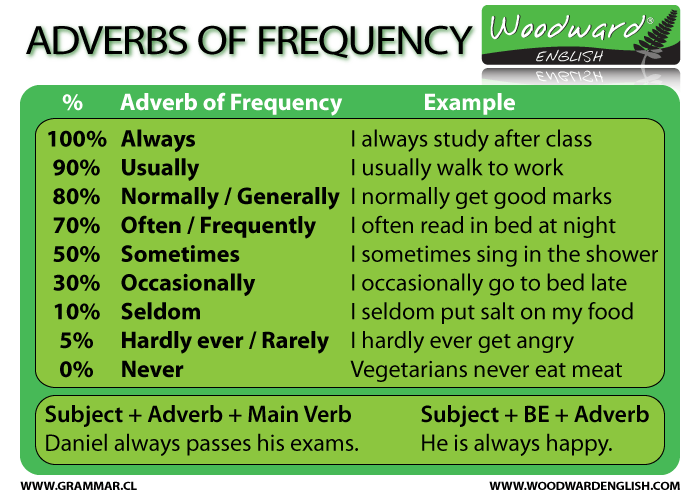Unit 1
| THE PRESENT SIMPLE AND PRESENT CONTINUOUS | ||||||||
|
Utilizamos el presente simple para hablar de hábitos que realizamos con cierta periodicidad. Peter goes to the café after school. También utilizamos el presente simple para expresar algo que siempre es verdad. Giraffes are very tall. Utilizamos el presente continuo para hablar de algo que estamos haciendo justo en este momento. I'm making dinner at the moment.
|
||||||||
|
ON LINE EXERCISES |
||||||||
| ADVERBS OF FREQUENCY | ||||||||||||||||||||||||||||||||||
|
Utilizamos los adverbios de frecuencia en "present tense" para hablar de la frecuencia con la que realizamos una acción o una rutina (siempre, a veces, nunca...) Los adverbios de frecuencia se colocan detrás des verbo "to be", delante de los demás verbos y en medio de los verbos compuestos.
|
||||||||||||||||||||||||||||||||||
|
||||||||||||||||||||||||||||||||||
ON LINE EXERECISES

